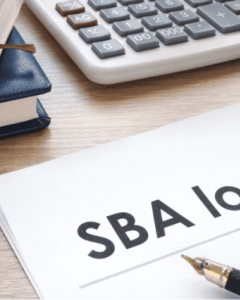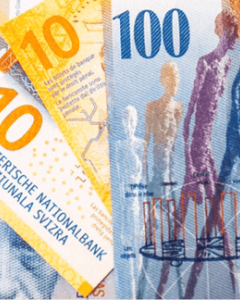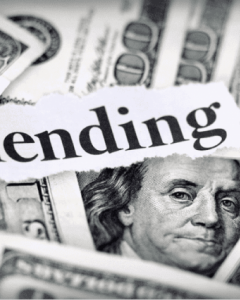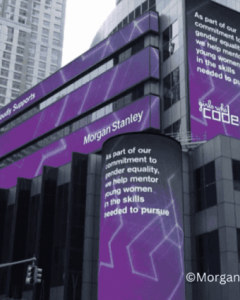Fed Raises Interest Rates to 22-Year High
In a much-anticipated decision, the Federal Reserve (Fed) announced a 25 basis point increase in interest rates, bringing it to a range of 5.25% to 5.5%.
Fed Officials' Consensus
Lack of Clarity in the Statement
The 11th Rate Hike
Inflation and Economic Growth Outlook
Continuation of Balance Sheet Reduction
FAQs
The 11th Rate Hike
Inflation and Economic Growth Outlook
Continuation of Balance Sheet Reduction
FAQs
Continuation of Balance Sheet Reduction
FAQs
In a much-anticipated decision, the Federal Reserve (Fed) announced a 25 basis point increase in interest rates, bringing it to a range of 5.25% to 5.5%. This marks the highest level since early 2001. The market eagerly awaited these signals regarding the future path of interest rate hikes, questioning if this would be the last rate hike or if more would follow. Despite the Fed officials' previous indication of two more rate hikes in June, the market dismissed these forecasts and believed that there would be no more increases after July. However, the post-meeting statement from the Fed only provided a vague signal of future moves.

Fed Officials' Consensus
One notable aspect of the post-meeting statement was the unanimous agreement among members of the Federal Open Market Committee (FOMC) to raise interest rates by 25 basis points. Despite expectations of at least a mild recession in the near future, the economic growth forecast was upgraded from "moderate" to "moderate" in the statement. Fed officials maintained that inflation remained high and job growth remained "strong."
Lack of Clarity in the Statement
According to experts, the FOMC statement did not provide substantial information about the future roadmap. The wording used in the statement seemed to be a retraction of the May 2023 statement when rates were previously increased by 25 basis points. Austan Goolsbee, a prominent economist, consistently expressed the need to halt the rate hikes. However, there was no disagreement within the FOMC regarding the decision to raise rates.
The 11th Rate Hike
This rate hike represents the 11th time the Fed has increased rates since March 2022. In June, they opted to keep rates unchanged to assess the impact of previous monetary tightening moves on the economy. The federal funds rate, which determines the interest rate that commercial banks charge for overnight lending, will have implications for various types of consumer debt, including home loans, credit cards, and car loans.
Inflation and Economic Growth Outlook
The recent developments in inflation indicate that the Fed's actions have been effective. In June 2023, the consumer price index (CPI) has only increased by 3% compared to the same period, significantly lower than the 9.1% level recorded previously. Consumers are gradually growing more positive about inflation, as evidenced by the University of Michigan sentiment index projecting an inflation expectation of 3.4% for the following year. However, when excluding food and energy, the core CPI remains high at 4.8%. The Cleveland Fed's tool even suggests that July's CPI may reach 3.4%, with core inflation reaching 4.9%. It is important to note that these inflation figures, although lower than their previous peak, still exceed the Fed's 2% target.
Meanwhile, economic growth has surprisingly remained robust even with the ten previous interest rate hikes. The Atlanta Fed's tool estimates that the second quarter GDP could grow by 2.4%. Despite expectations of a recession within the next 12 months, there have been no signals supporting this possibility. In the first quarter of 2023, US GDP increased by 2%. The job market also demonstrates strength, with nearly 1.7 million jobs added in 2023 and an unemployment rate of 3.6% in June 2023, similar to the previous year.
Continuation of Balance Sheet Reduction
In addition to the decision to raise interest rates, the FOMC signaled its intention to continue reducing the balance sheet by allowing bonds to mature without reinvesting them.
The Fed's decision to raise interest rates to a 22-year high reflects their expectation of sustained economic growth and their commitment to controlling inflation. The unanimous agreement among FOMC members emphasizes their confidence in this path. The future impact of these rate hikes on the economy will be closely monitored, especially regarding inflation levels. Overall, the Fed's actions indicate their proactive approach towards maintaining economic stability.
FAQs
Q1: Why did the Fed choose to raise interest rates at this time?
The decision to raise interest rates was driven by the Fed's goal of controlling inflation and maintaining economic stability. The committee agreed that the previous rate hikes have had a positive impact but believed that further tightening was necessary.
Q2: How will this interest rate increase affect consumers?
An interest rate increase can lead to higher borrowing costs for consumers, including home loans, credit cards, and car loans. Consumers should stay informed and assess the potential impact on their finances.
Q3: Will there be future rate hikes after this increase?
The market anticipated this to be the last rate hike, but the Fed's post-meeting statement did not provide clear signals about future moves. It will depend on how the economy and inflation develop in the coming months.
Q4: How will this rate hike impact the stock market?
Rate hikes can potentially affect the stock market as higher interest rates make borrowing and investing more expensive. It will be crucial to monitor the market's reaction to this news.
Q5: What other factors will the Fed consider moving forward?
The Fed will continue to monitor a range of economic indicators, including inflation, job growth, GDP, and consumer sentiment. They will use this data to inform future decisions on interest rates and overall monetary policy.
Fed Raises Interest Rates to 22-Year High
Funding Circle Makes History as Nondepository Institutions Secure SBA Lending Licenses After 40 Years
In a groundbreaking move, Funding Circle becomes one of the first nondepository institutions to receive an SBA lending license in 40 years. This historic win ushers in a new era for small business lending. Read more to uncover the details and implications.
In a groundbreaking move, Funding Circle becomes one of the first nondepository institutions to receive an SBA lending license in 40 years. This historic win ushers in a new era for small business lending. Read more to uncover the details and implications.
Read moreSecrets Revealed: How Swiss Private Banks Are Raking in Profits!
Discover the hidden wealth potential of Swiss private banks as they capitalize on the booming interest rate business. A recent study by KPMG reveals how these banks have significantly improved their earnings, presenting a lucrative opportunity for investors. Uncover the secrets to their success now!
Discover the hidden wealth potential of Swiss private banks as they capitalize on the booming interest rate business. A recent study by KPMG reveals how these banks have significantly improved their earnings, presenting a lucrative opportunity for investors. Uncover the secrets to their success now!
Read moreCadence Bank Strengthens Core Banking with $904M Insurance Unit Sale
Cadence Bank strengthens its core banking business by selling its insurance unit for $904 million, enabling a more streamlined operation and enhanced focus.
Cadence Bank strengthens its core banking business by selling its insurance unit for $904 million, enabling a more streamlined operation and enhanced focus.
Read moreNatWest's Profit Downgrade: A Wake-up Call for the Financial World
Explore the impact of NatWest's profit downgrade on the financial world and gain insights into the challenges faced by this esteemed institution. Discover the critical changes shaping the broader banking industry.
Explore the impact of NatWest\'s profit downgrade on the financial world and gain insights into the challenges faced by this esteemed institution. Discover the critical changes shaping the broader banking industry.
Read moreRevolutionizing Treasury Management: Trovata partners with JPMorgan for Streamlined Account Balances Analysis
In a thrilling collaboration that promises to transform the way businesses handle their finances, enterprise cash management fintech Trovata has joined forces with JPMorgan.
In a thrilling collaboration that promises to transform the way businesses handle their finances, enterprise cash management fintech Trovata has joined forces with JPMorgan.
Read moreUS Banks Under Increased Scrutiny: New Regulations Aim to Modernize Fair Lending Standards
U.S. regulators have announced tougher new rules to modernize fair lending standards, specifically targeting banks and their service to communities and geographies through online lending.
U.S. regulators have announced tougher new rules to modernize fair lending standards, specifically targeting banks and their service to communities and geographies through online lending.
Read moreSpanish bank Santander pours $250M into investment bank
Spanish bank Santander has taken a bold step to strengthen its corporate and investment banking division by allocating $250 million for growth initiatives over the next two years.
Spanish bank Santander has taken a bold step to strengthen its corporate and investment banking division by allocating $250 million for growth initiatives over the next two years.
Read moreMorgan Stanley Q3 Profits Fall 9% Amid Sluggish Dealmaking
Morgan Stanley witnessed a 9% decline in Q3 profits due to sluggish dealmaking. Read more to learn about the financial report and its implications.
Morgan Stanley witnessed a 9% decline in Q3 profits due to sluggish dealmaking. Read more to learn about the financial report and its implications.
Read moreEuropean Banks Report Highest Profits Since Financial Crisis: Unlocking Success
European banks are experiencing their highest profits since the financial crisis, signaling success amidst a bleak global economic outlook. Explore margin pressure and deteriorating loans in this earnings season.
European banks are experiencing their highest profits since the financial crisis, signaling success amidst a bleak global economic outlook. Explore margin pressure and deteriorating loans in this earnings season.
Read more













